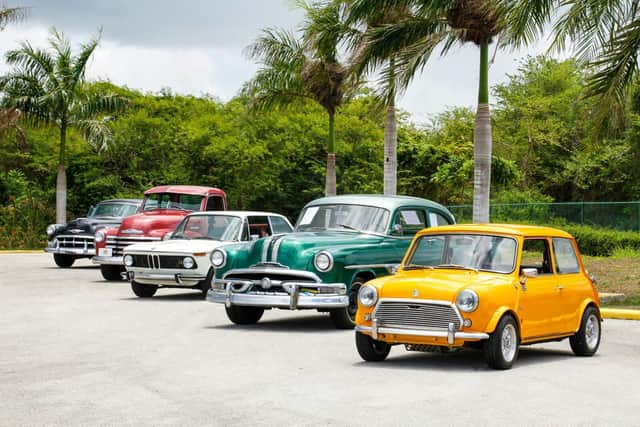How new electric conversion regulations are keeping classic cars on the road
and live on Freeview channel 276
The Historic and Classic Vehicle Alliance (HCVA) has introduced new Minimum Professional Standards guidance aimed at demystifying the process of converting vintage vehicles to electric drivetrains. This initiative promises to safeguard the legacy of classic cars, ensuring they remain a vibrant part of our cultural landscape while embracing the future of motoring.
With these regulations, classic car enthusiasts are offered a "checklist of issues" to navigate the complex systems involved in electric conversions, marking a significant step towards blending the allure of the past with the innovations of the present. As we stand at the crossroads of tradition and innovation, these new measures may well be the key to keeping classic cars rolling on our roads, powered by the clean, silent force of electricity.
Advertisement
Hide AdAdvertisement
Hide AdWe spoke to the team of experts at The Carrosserie Company to find out more about these new changes. They had this to say ‘Though the conversation around electric engine conversions for classic cars remains a whisper in the vast automotive community, it's steadily turning into a more prominent dialogue for those seeking a seamless merger of tradition and future-forward technology.’


What will these changes achieve?
The new regulations and Minimum Professional Standards guidance introduced by the Historic and Classic Vehicle Alliance (HCVA) aim to achieve several key objectives in the realm of classic car electrification:
Clarification and guidance: They are designed to help motorists and garages understand the process of converting vintage cars from internal combustion engines to electric drivetrains. This includes providing a clear framework and checklist of issues to address during the design, incorporation, and use of electric systems in classic cars.
Safety and standards: By introducing these standards, the HCVA aims to ensure that conversions are done safely and effectively, addressing critical areas such as weight distribution, structural considerations, and logic protocols in the completed system. This is particularly important as the technology involved may be unfamiliar to garages accustomed to working with internal combustion engines.
Advertisement
Hide AdAdvertisement
Hide AdSustainability and longevity: The regulations support the extension of the longevity of classic cars through electrification, making them more sustainable and suitable for modern use. This is increasingly important as the automotive world moves towards electric vehicles and seeks to reduce carbon emissions.
Legal and regulatory compliance: The guidance aims to help owners and businesses navigate the legal and regulatory aspects of car electrification, ensuring that converted vehicles meet current standards and can be used legally on public roads.
Promotion of electrification: By setting out these standards, the HCVA backs the use of electrification as a viable option for classic motoring, ensuring that classic cars can remain a part of automotive culture and heritage in an environmentally friendly way.
Overall, these changes are intended to facilitate the safe and effective conversion of classic cars to electric power, ensuring they can continue to be enjoyed by enthusiasts while meeting modern environmental standards.